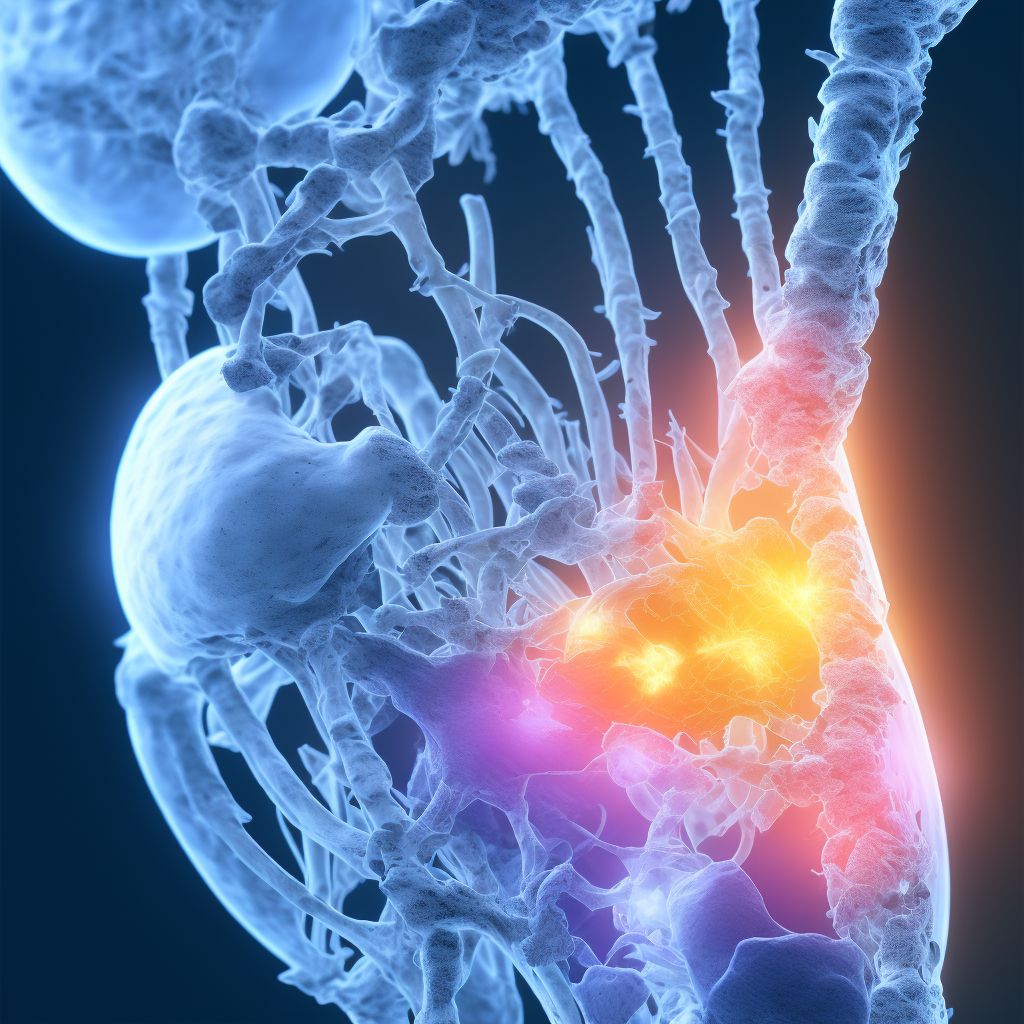
Nondisplaced fracture of left tibial tuberosity, subsequent encounter for open fracture type I or II with delayed healing Save
ICD-10 code: S82.155H
Disease category: S82.155: Nondisplaced fracture of left tibial tuberosity
Nondisplaced Fracture of Left Tibial Tuberosity: Understanding Delayed Healing
When it comes to fractures, the left tibial tuberosity is a common site of injury. A nondisplaced fracture occurs when the bone cracks but remains in alignment. In some cases, these fractures may heal without any complications. However, there are instances when delayed healing occurs, leading to subsequent encounters for open fracture type I or II.
Delayed healing refers to a fracture that takes longer than expected to heal. This can be due to various factors such as poor blood supply to the area, inadequate immobilization, or underlying medical conditions that affect bone health. While treatment options for this condition should be discussed with a healthcare professional, it is essential to understand the nature of the injury.
During a subsequent encounter for open fracture type I or II with delayed healing, the focus is on monitoring the progress of the fracture and managing any complications that may arise. It is important to note that each case is unique, and treatment plans may vary based on individual circumstances.
- Diagnostic Evaluation: The healthcare provider will assess the healing progress by conducting a thorough examination and ordering imaging tests such as X-rays or CT scans. These tests help determine the extent of the fracture and identify any potential complications.
- Monitoring and Follow-up: Regular follow-up appointments are crucial to monitor the fracture's healing progress. During these visits, the healthcare provider may recommend adjustments to the treatment plan based on the patient's response and any new developments.
- Physical Therapy: In some cases, physical therapy may be prescribed to promote healing and restore strength and mobility to the affected area. A trained therapist can guide patients through exercises and techniques that aid in the recovery process.
- Managing Complications: Delayed healing can sometimes lead to complications such as infection or malalignment. If any complications arise, appropriate measures will be taken to address them, which may include additional interventions or procedures.
It is important to remember that the information provided here serves as a general overview and should not replace personalized medical advice. Consulting with a healthcare professional is essential for an accurate diagnosis and appropriate treatment plan.
In conclusion, a nondisplaced fracture of the left tibial tuberosity with delayed healing requires careful monitoring and management. Understanding the diagnostic evaluations, follow-up appointments, physical therapy, and management of complications can help individuals navigate this challenging situation effectively.
Treatment of Nondisplaced fracture of left tibial tuberosity, subsequent encounter for open fracture type I or II with delayed healing:
Treatment Options for Nondisplaced Fracture of Left Tibial Tuberosity with Delayed Healing
A nondisplaced fracture of the left tibial tuberosity can cause significant pain and discomfort, affecting mobility and daily activities. In some cases, delayed healing can occur, requiring specific treatment options to facilitate proper recovery. Let's explore some effective treatment option...
To see full information about treatment please Sign up or Log in